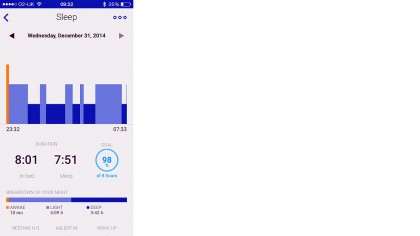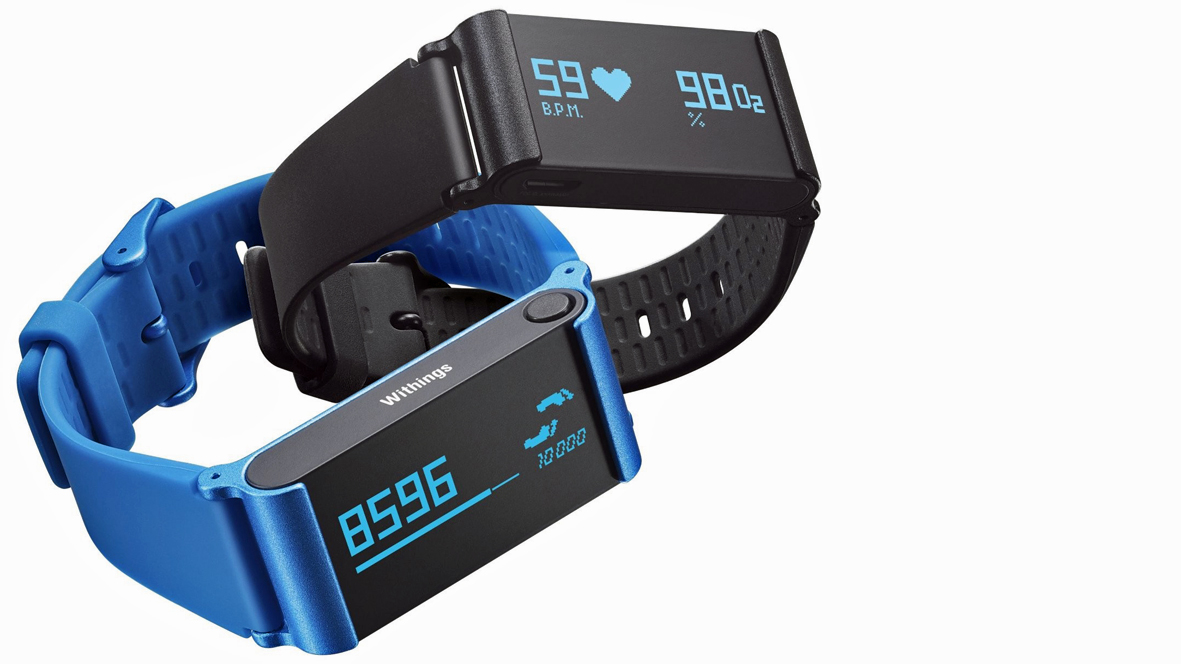Why you can trust TechRadar
And so to bed…
Also not quite there with these kind of devices (see the Garmin VivoSmart review) is the sleep monitoring. Last night, for instance, the Ox insisted I'd had 8.01 solid hours (or 8.01 'in bed' with 7 hours 51 minutes asleep). Yes, that's a bit more in-depth analysis than the Garmin offered, but that doesn't mean it's any more correct or useful. If my sleep was really 98% efficient as reported rather than 5 hours of tossing and turning, I'd look a lot fresher. It also regularly reported that I was asleep within 10 minutes of lying down, which hasn't happened since I was about two.

The reminders section does offer sleep advice, theory and explanation, which could prove useful to some.
Be still my thrashing heart
The heart-rate monitor? Well I have my doubts about that as well. My pulse showed normal levels when seated, but at times was a bit all over the place during exercise – and I mean going from alarming to "terrified hamster", rather than just higher. This makes it difficult to use for zonal training and probably not advisable as a guide to your general health.
The blood oxygen feature, which is what "Ox" – and "O2" before it – alludes to, is another bolted-on feature of limited use, at least for me. Basically, if your O2 drops to 90 or below – at which point you wouldn't be feeling at all great anyway – you should seek medical opinion. It has no bearing on your routines other than that.
Smartwatch features and battery
One potentially very useful feature of Garmin's Vivosmart was the addition of smartwatch-style notifications and music controls. Well, the Pulse Ox does not do that. However, it offers a longer battery life, lasting a good 10-12 days per charge for me, whereas the Vivosmart generally lasted less than a week.
Verdict
If you want motivation to take more strides in 2015, the Withings Pulse Ox could be a winner. It's all very easy to use straight out of the box, has a fun, clear, cheery app and easily allows you to invite friends to your Leaderboard to see who can take the most steps, notifying you each time the rankings change, which is a really nice touch.
There's also a whole host of other Withings health products that you can sync data up with if you so wish, from blood pressure monitors to scales. For a slightly older person, this could make the Ox the perfect product.
If you're more interested in fitness than health, it's still a great step-counter-with-knobs-on, but it doesn't really deliver as a tracker for more vigorous exercise, despite its welter of sensors and features.
We like
The step counting, ease of use and relatively low price – it's a good £40 cheaper than the Vivosmart – all appeal here.
We dislike
As mentioned, you should take the calories burned or sleep analysis with a heavy pinch of salt (low-sodium, if possible). It's a shame more use isn't made of the altimeter and heart rate analysis. The fact it's not water resistant enough to shower in is fairly ridiculous.
Verdict
Of course, hardcore athletes will already know not to go trading in their Garmin Forerunner, TomTom Runner or (maybe) Epson Runsense watches for something like this, but for a general guide to the average person's movements throughout the day, it's not bad at all. I am struggling, however, to think of any really obvious reasons to choose this over similar devices from Garmin, Fitbit, Jawbone et al.
Very solid, in short. Even if it's not quite one to set your heart racing.
